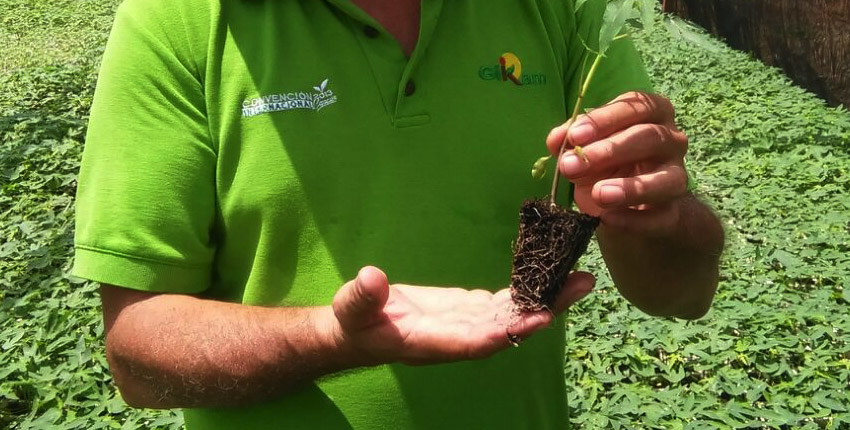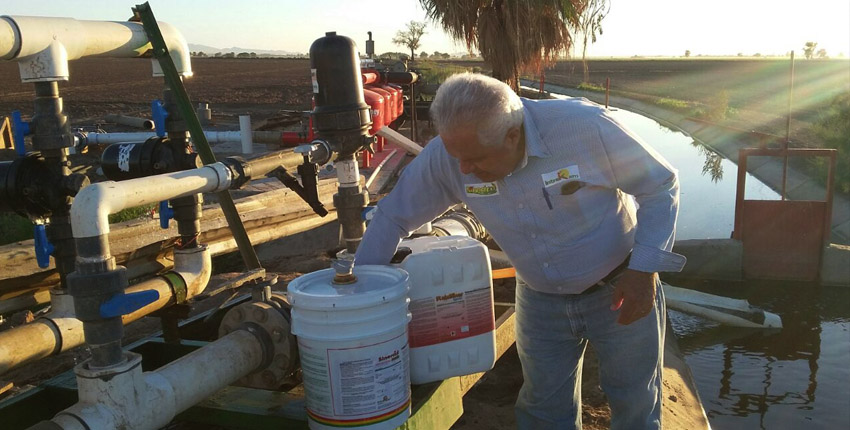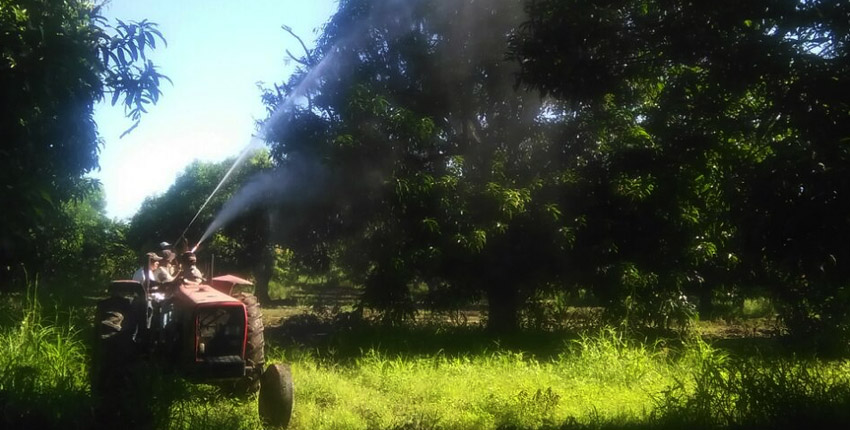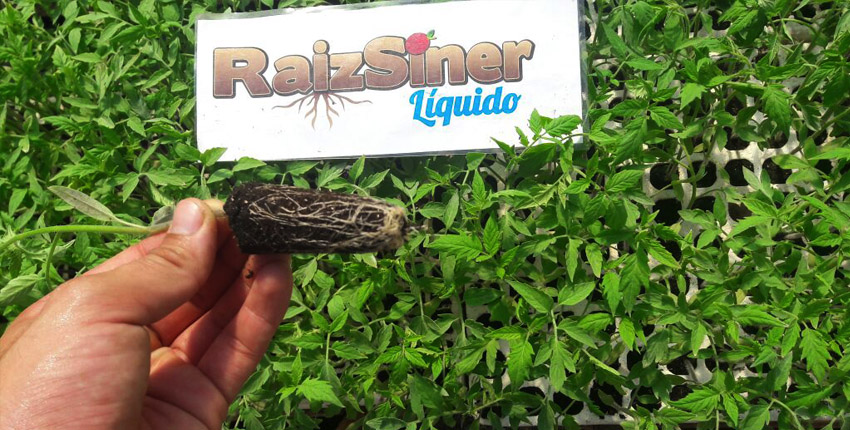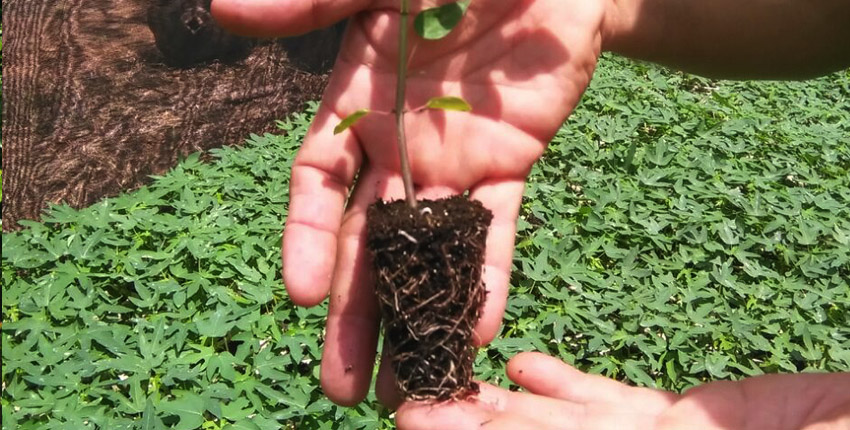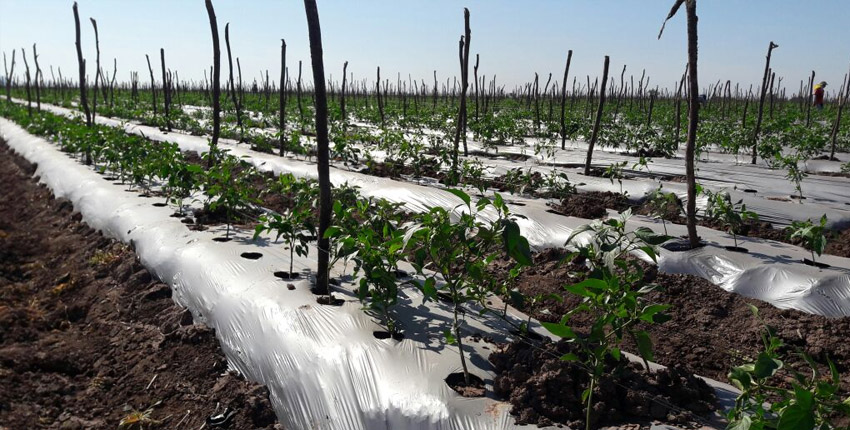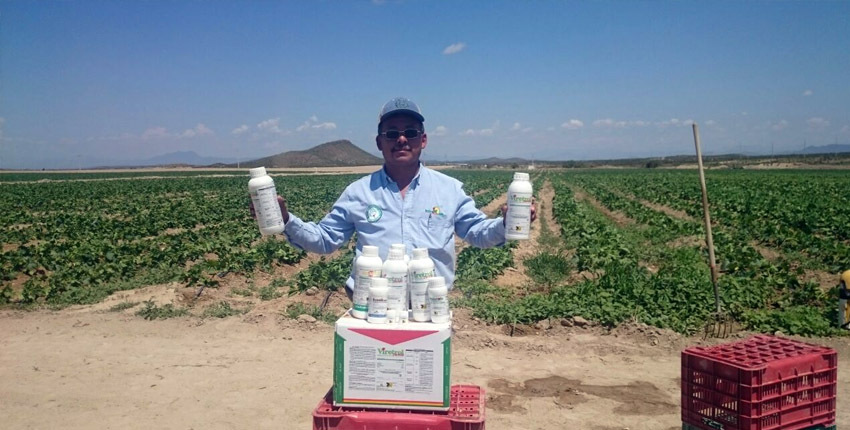Technical information
THE USE OF AMINOACIDS IN AGRICULTURE
All living creatures need L-amino acids as fundamental structural units for the production of proteins, enzymes and take-off material for the synthesis of other essential substances. Until recently, the only way of promoting the formation of amino acids in plants, was indirectly and only through the addition of inorganic fertilizers directly in the root. Nitrogen goes to the soil solution and from there it is absorbed by the roots and transformed in amino acids. This process demands for a high energy consumption which can be profited of in other biological processes.
Now-a-days it’s been proved that soil and foliar application of amino acids has a favorable effect on the nourishment of crops, as the fundamental links are provided for the formation of biological macro-molecules with no need of intermediate steps for the synthesis.
THE FUNCTION OF AMINO ACIDS
Amino acids are the basic components of proteins, complex macromolecules that develop structural functions in plants (as components of cellular walls), enzymatic (many biochemical processes are catalyzed by proteins) and hormonal.
They are characterized for having in their molecule an amino group (-NH2) and an acidic group (-COOH) linked to a same carbon molecule named “alpha carbon”. Attached to this carbon are also a Hydrogen atom and a radical which differentiates the diverse amino acids.
COOH
H - C - NH2
R
Regarding the position the 4 groups linked to the alpha carbon occupy in space, two kinds of isomers, named dextrorotatory (D) and levorotatory (L) are distinguished. The amino acids which form proteins, called protein amino acids and most of those found in nature are always L shaped.
In addition to the protein amino acids, which are 20, there are others which appear in free or combined form, but never as part of the proteins. These are called non-protein-amino acids and over 200 are known.
Plants are capable of synthesizing any amino-acid, protein and non-protein, using ammonia and nitrates they find on the ground as a source of nitrogen. Moreover, some amino acids contain sulfur too that the plant gets from the ground sulfate.
The synthesizing of amino acids is costly for the plants, in relation to the energetic requirement they precise. This energy consumption is especially important in moments in which the plant physiology is not optimal such as heat or cold waves, illness or hydro stress.
Moreover, it has been proved that if plants are put under any kind of stress, they need to increase the amount of total free amino acids to be able to overcome such situation. They do this by decreasing the protein formation which provokes a reduction on the growing rate of the plant.
AMINO ACID APPLICATION IN PLANTS:
At the end of the 1970’s the alternative of fertilizing the plant directly with free amino acids arouse. This method would avoid the chemical transformation of nitric nitrogen and ammonia within the plant and into amino acids, therefore this would translate into an important energy saving which would help overcome stress situations as well as promote its development and growth.
It is also known that amino acids are closely related to the regulation mechanisms of growth and vegetal development. Some vegetal hormones are united to amino acids, or proceed from the transformation of the latter, which indicates the important role of applying free amino acids as fertilizers.
Plants can absorb amino acids either through the roots or the leaves.
- Through the roots they will be absorbed just like nitric nitrogen or ammonia are and the sap will distribute them throughout the plant.
- The most common practice is through the leaves, as it can be applied together with other treatments such as leave compost, phytosanitaries, herbicides, etc, transposing the amino acids from the leaves to the rest of the plant and external factors. These proofs have demonstrated the efficiency of the external L-shaped amino acids by proving their rapid incorporation to the plan metabolism as if it were them who had synthesized contributing like this to the development and growth process.
OBTAINING AMINO ACIDS:
Amino acids are obtained through the hydrolysis of proteins. Hydrolysis means the rupture of proteins in the units that form them, meaning, amino acids. After the hydrolysis process, a mixture composed of mainly free amino acids is obtained although it also contains, in a lesser amount, amino acid chains (short chain peptide). The plant can only use free amino acids, and within these, only those L-shaped.
Proteins used to obtain amino acids can be either animal or vegetal, tough the vegetal ones are more recommended as fertilizers given the amino acid content they already present, which is usually employed by plants in concentrations usual to them.
The hydrolysis of the protein material for its transformation in free amino acids can be done through proteolytic enzymes (enzymatic hydrolysis) or through an attack of concentrated acids as hydrochloric or sulfuric acid (acid hydrolysis). The enzymatic hydrolysis happens in soft conditions (approximately 60° C) by molecules which selectively start breaking the protein chains and freeing amino acids. On the contrary, acid hydrolysis is produced in extreme conditions (temperatures of 100°C or more and half concentrated acid), which provokes the destruction of some essential amino acids such as tryptophan (which is related to the synthesis of a hormone: indole-acetic acid) and the acquisition of a mixture of L and D shaped amino acids, not being useful the D-shaped amino acids for the plant, as mentioned before.
Therefore, it can be said that those amino acids which come from the enzymatic hydrolysis of vegetal proteins (soja, sun flower) are an equilibrated fertilizer for plants as they contain all the necessary amino acids in the right proportion. For all the previously mentioned reasons, amino acids are found within a group of substances called bioactivators.
BIOACTIVATORS
Bioactivators are composed by amino acids, polysaccharides, peptides and/or humics. Bioactivators are absorbed and are used immediately. Their absorption do not depend of the photosynthetic activity of the plant. The bioactivators pass directly through the conductive tissue with a minimum consumption of energy. The objective of applying these products is not nutritional, but to favor and potentiate the vegetable mechanism.
BENEFITS OF AMINO ACIDS IN PLANTS
- They increase cellular permeability as well as the absorption and translation of nutritional ions.
- They increase blooming, decreasing the number of floral abortions, regulating the osmotic processes.
- They are indispensable for an excellent blooming process combined with micro elements which increase weight and fruit flavor.
- They potentiate the absorption of mineral nutrients, easing its transportation throughout the sap.
- They accelerate the recovery of plants that have been subjected to adverse conditions such as transplantation, transportation, frosts, hard winds, hail, asphyxia, toxic effect of phytosanitary treatments, etc.
- They equilibrate plants metabolism.
- They are rapidly assimilated by the leaves as well as the roots.
- They have an immediate action.
- They increase production, quality and slow the aging process
- They provide savings for the crops.
Amino acids are essential elements of the enzymes that catalyze sugar and starch synthesis among other leaves, flowers and fruit components. Amino acids such as Lisina and Arginina contribute to the increase of leaf chlorophyll and slow down the aging process, to which the photosynthesis performance is intensified.
They can be mixed with as phytosanitary product and liquid fertilizers, easing its action and resulting in energy saving during the exploitation process.
AMINO ACID CHARACTERISTICS FOUND IN THE INTRAKAM PRODUCTS
Amino acids used for the fabrication of INTRAKAM products are produced under strict quality regulations and using the Enzymatic Hydrolysis procedure.
WHAT IS THE ENZYMATIC HYDROLYSIS?
The enzymatic hydrolysis is a process in which specific enzymes break the peptide links of the proteins, acquiring free amino acids and oligopeptides.
WHY DOES INTRAKAM USE AMINO ACIDS THAT COME FROM ENZYMATIC HYDROLYSIS?
- A) Because the enzymatic hydrolysis does not favor the destruction of hormonal action which accompanies the amino acids which can be destroyed by other kids of hydrolysis.
- B) Because amino acids are not racemized by the enzymatic hydrolysis, event that happens with Acidic and Alkaline hydrolysis, leaving within the INTRAKAM amino acids mainly L-shaped free amino acids which are biologically active.
MAXIMUM QUALITY
The care in the selection of raw material used to produce SINERBA NPK amino acid, SINERFOS amino acid and SINER-K amino acid, guarantees the extraordinary quality obtained in the treated crops.
MAXIMUM PERFORMANCE
By applying INTRAKAM amino acids to the crops either through the leaves or the roots, an increase in production is achieved
MAXIMUM PRECOCITY
By applying INTRAKAM amino acids the precocity of the harvesting are stimulated.
MAXIMUM RESISTANCE
INTRAKAM amino acids increase crop resistance against adverse situations (drought, frost, salinity, hail, asphyxia, etc), maintaining the photosynthetic activity when it decreases due to low temperatures or other factors.
BETTER NUTRIENTS ABSORPTION
The chelating properties of INTRAKAM amino acids increase the input of micronutrient availability.
AMINO ACIDS
INTRAKAM amino acids are hydrolyzed through an enzymatic process of vegetal origin. They activate the plan physiology promoting growth, roots development, the absorption of nutrients and increasing quality and production.
It is also relevant the effect that INTRAKAM amino acids have to help plant to overcome adverse situations such as illness, water stress and heat or cold excess. Moreover they stimulate pollen germination and sugar content in the fruits.
If applied jointly with fungicide and herbicide they enhance the dispersion, penetration and persistence of the latter, being able to reduce the recommended dose of those pesticides.
When applied to the irrigation water, INTRAKAM amino acids enhance rooting, slip production and they stimulate germination.
If INTRAKAM amino acids are directly supplied to the plant, it will not need to use any additional energy to synthesize them, so the response to the foliar fertilization is immediate.
The state of the crop will recover rapidly in situations of stress such as plague attack, frosts, droughts, etc. The alpha-amino acids present two configurations: L (Levorotatory) or D (Dextrorotatory). During their metabolic processes, plants use amino acids with L configuration, being this another reason which why INTRAKAM amino acids are ideal products for nitrogen fertilization.
Another advantage of INTRAKAM amino acids is that they can be mixed with many fertilizers or phytosanitary products and thanks to the mechanism of amino acid active transport through the leaves, the absorption process of the other products applied jointly is accelerated.
Amino acids are organic molecules that are a part of proteins. On their own, plants are capable of bio-syntethisizing amino acids through inorganic material such as nitrogen, sulfur and other organic compounds.
To ease these processes and avoid useless energy use L-amino acids are used as a way to directly penetrate the plant. INTRAKAM amino acids contain the main amino acids and the essential functions of these compounds in the plants are:
- Stomatal regulation.
- Root activity.
- Resistance to water stress, frost and disease.
- Chelating power.
- Increase in production and fruit precocity.
- Improves pollination and fruit set.
Hacer producir más el campo con menos...
© 2017 INTRAKAM S.A de C.V







